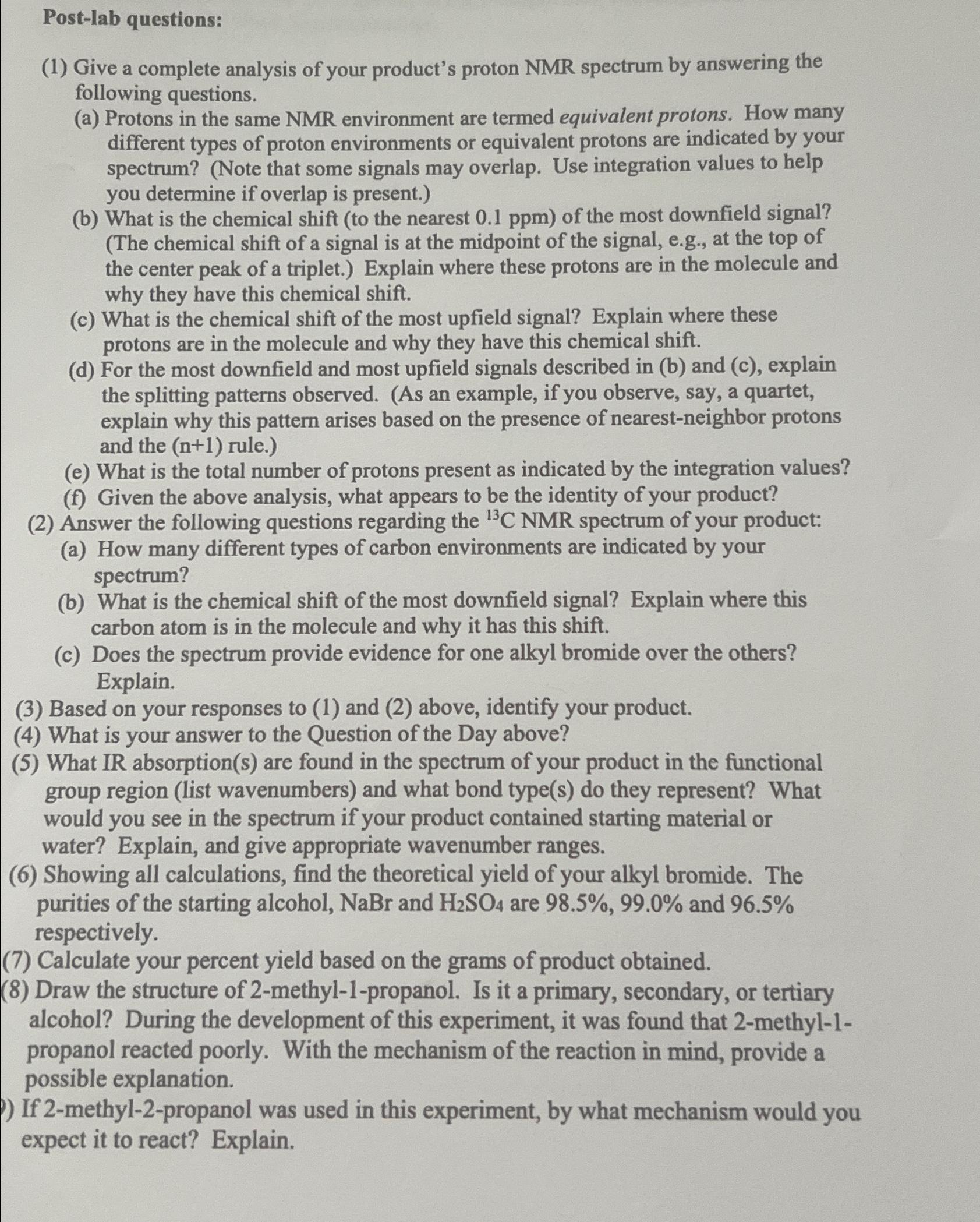Answered step by step
Verified Expert Solution
Question
1 Approved Answer
Post-lab questions: (1) Give a complete analysis of your product's proton NMR spectrum by answering the following questions. (a) Protons in the same NMR

Post-lab questions: (1) Give a complete analysis of your product's proton NMR spectrum by answering the following questions. (a) Protons in the same NMR environment are termed equivalent protons. How many different types of proton environments or equivalent protons are indicated by your spectrum? (Note that some signals may overlap. Use integration values to help you determine if overlap is present.) (b) What is the chemical shift (to the nearest 0.1 ppm) of the most downfield signal? (The chemical shift of a signal is at the midpoint of the signal, e.g., at the top of the center peak of a triplet.) Explain where these protons are in the molecule and why they have this chemical shift. (c) What is the chemical shift of the most upfield signal? Explain where these protons are in the molecule and why they have this chemical shift. (d) For the most downfield and most upfield signals described in (b) and (c), explain the splitting patterns observed. (As an example, if you observe, say, a quartet, explain why this pattern arises based on the presence of nearest-neighbor protons and the (n+1) rule.) (e) What is the total number of protons present as indicated by the integration values? (f) Given the above analysis, what appears to be the identity of your product? (2) Answer the following questions regarding the 3C NMR spectrum of your product: (a) How many different types of carbon environments are indicated by your spectrum? (b) What is the chemical shift of the most downfield signal? Explain where this carbon atom is in the molecule and why it has this shift. (c) Does the spectrum provide evidence for one alkyl bromide over the others? Explain. (3) Based on your responses to (1) and (2) above, identify your product. (4) What is your answer to the Question of the Day above? (5) What IR absorption(s) are found in the spectrum of your product in the functional group region (list wavenumbers) and what bond type(s) do they represent? What would you see in the spectrum if your product contained starting material or water? Explain, and give appropriate wavenumber ranges. (6) Showing all calculations, find the theoretical yield of your alkyl bromide. The purities of the starting alcohol, NaBr and HSO4 are 98.5%, 99.0% and 96.5% respectively. (7) Calculate your percent yield based on the grams of product obtained. (8) Draw the structure of 2-methyl-1-propanol. Is it a primary, secondary, or tertiary alcohol? During the development of this experiment, it was found that 2-methyl-1- propanol reacted poorly. With the mechanism of the reaction in mind, provide a possible explanation. ) If 2-methyl-2-propanol was used in this experiment, by what mechanism would you expect it to react? Explain.
Step by Step Solution
★★★★★
3.32 Rating (155 Votes )
There are 3 Steps involved in it
Step: 1
1 Proton NMR Spectrum Analysts a To determine the number of different types of proton environments or equivalent protons you need to identify distinct ...
Get Instant Access to Expert-Tailored Solutions
See step-by-step solutions with expert insights and AI powered tools for academic success
Step: 2

Step: 3

Ace Your Homework with AI
Get the answers you need in no time with our AI-driven, step-by-step assistance
Get Started


